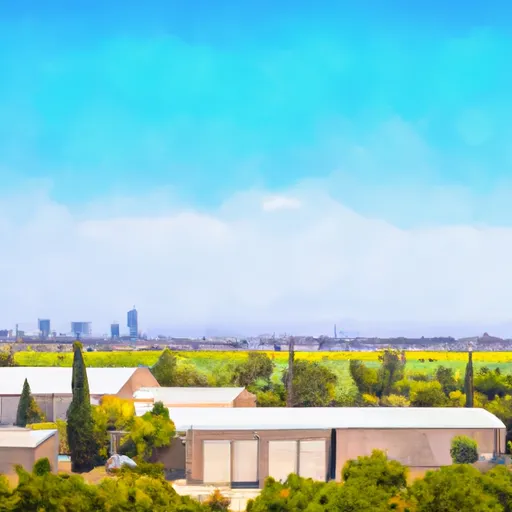-
 Snoflo Premium
Snoflo Premium
Get unlimited access to all our content
With no Ad interruptions! - Start Your Free Trial Login with existing account
Somerset
Eden Index
Climate
9.8
•
Recreation
6.4
•
Community
1.2
•
Safeguard
6.4/10

Somerset, California is a small unincorporated community located in the Sierra Nevada foothills of El Dorado County. The climate in Somerset is classified as a Mediterranean climate, characterized by hot, dry summers and cool, wet winters. Summers typically see average temperatures ranging from the mid-80s to low 90s (Fahrenheit), while winters experience average temperatures in the low to mid-50s.
Hydrologically, Somerset is part of the American River watershed, with the Cosumnes River flowing nearby. The region also features various creeks and streams that contribute to the hydrology of the area. These water sources provide opportunities for fishing, kayaking, and other water-based activities.
Outdoor recreation opportunities in Somerset are abundant. The area is known for its scenic beauty, offering opportunities for hiking, camping, and wildlife viewing. Nearby Eldorado National Forest provides access to extensive hiking and backpacking trails, including the popular Pacific Crest Trail. Additionally, the region is dotted with wineries and vineyards, making wine tasting and tours a popular activity in Somerset. Overall, Somerset offers a serene natural environment for outdoor enthusiasts to explore and enjoy.
What is the Eden Index?
The Snoflo Eden Index serves as a comprehensive rating system for regions, evaluating their desirability through a holistic assessment of climate health, outdoor recreation opportunities, and natural disaster risk, acknowledging the profound impact of these factors on livability and well-being.
Climate Health Indicator (CHI): 9.8
Somerset receives approximately
1148mm of rain per year,
with humidity levels near 75%
and air temperatures averaging around
14°C.
Somerset has a plant hardyness factor of
9, meaning
plants and agriculture in this region tend to thrive here all year round.
By considering the ideal temperature range, reliable water supplies, clean air, and stable seasonal rain or snowpacks, the Climate Health Indicator (CHI) underscores the significance of a healthy climate as the foundation for quality living.
A healthy climate is paramount for ensuring a high quality of life and livability in a region, fostering both physical well-being and environmental harmony. This can be characterized by ideal temperatures, reliable access to water supplies, clean air, and consistent seasonal rain or snowpacks.
Weather Forecast
Streamflow Conditions
San Joaquin
Area Rivers
San Joaquin
Snowpack Depths
San Joaquin
Reservoir Storage Capacity
San Joaquin
Groundwater Levels
Recreational Opportunity Index (ROI): 6.4
The Recreational Opportunity Index (ROI) recognizes the value of outdoor recreational options, such as parks, hiking trails, camping sites, and fishing spots, while acknowledging that climate plays a pivotal role in ensuring the comfort and consistency of these experiences.
Access to outdoor recreational opportunities, encompassing activities such as parks, hiking, camping, and fishing, is crucial for overall well-being, and the climate plays a pivotal role in enabling and enhancing these experiences, ensuring that individuals can engage in nature-based activities comfortably and consistently.
Camping Areas
| Campground | Campsites | Reservations | Toilets | Showers | Elevation |
|---|---|---|---|---|---|
| Ponderosa Cove | 18 | 4,293 ft | |||
| Stumpy Meadows | 40 | 4,465 ft | |||
| Dru Barner | 47 | 3,237 ft | |||
| Gerle Creek | 50 | 5,272 ft | |||
| Jones Fork | 10 | 5,052 ft | |||
| Fashoda | 30 | 4,869 ft | |||
| Sunset | 139 | 4,970 ft | |||
| West Point | 8 | 4,999 ft | |||
| Camino Cove | 32 | 4,898 ft | |||
| Airport Flat | 16 | 5,383 ft |
Nearby Fishing
Nearby Ski Areas
Catastrophe Safeguard Index (CSI):
The Catastrophe Safeguard Index (CSI) recognizes that natural disaster risk, encompassing floods, fires, hurricanes, and tornadoes, can drastically affect safety and the overall appeal of an area.
The level of natural disaster risk in a region significantly affects safety and the overall livability, with climate change amplifying these risks by potentially increasing the frequency and intensity of events like floods, fires, hurricanes, and tornadoes, thereby posing substantial challenges to community resilience and well-being.
Community Resilience Indicator (CRI): 1.2
The Community Resilience Indicator (CRI) recognizes that education, healthcare, and socioeconomics are crucial to the well-being of a region. The CRI acknowledges the profound impact of these elements on residents' overall quality of life. By evaluating educational resources, healthcare accessibility, and economic inclusivity, the index captures the essential aspects that contribute to a thriving community, fostering resident satisfaction, equity, and social cohesion.

